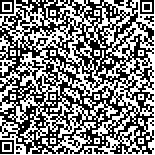| 摘要: |
| 虚拟现实(VR)推动了城市规划与
设计的技术发展,也推动了声学环境研究的
发展。声景可听化作为声景评价标准中重要
的组成部分,在虚拟现实的条件下人们如何
感知声景仍然有很多问题未被解决。本文
从声传播理论出发,提出从不同声音回放方
式、声传播过程到声源模拟的声景可听化框
架。为完善这一框架,对声景进行可听化重
现,并通过主观评价来校验声音重现的效
果。通过主观评价实验表明,在可听化框架
指导下利用虚拟现实技术还原声音场景,可
以为声景评价过程提供真实且具有沉浸感的
重现体验。本文明确了可听化技术框架在虚
拟现实下进行声景评价的可行性,进一步完
善了面向声景感知的虚拟现实可听化研究。 |
| 关键词: 声景 虚拟现实 声环境 可听化 主观评价 |
| DOI:10.13791/j.cnki.hsfwest.20210501 |
| 分类号: |
| 基金项目:欧盟顶尖资深科学家基金项目(740696) |
|
| Auralization of Virtual Reality for Soundscape |
|
XU Chunyang,KANG Jian
|
| Abstract: |
| Virtual Reality (VR) has driven technological developments in urban planning
and design, as well as in the domain of acoustic environments. Auralization is an important
process to reproduce and simulate sound signals in soundscape evaluation, and there are still
many unanswered questions about how people perceive soundscapes in VR. Depending on
the performance of the audio-visual rendering, different auralization technologies may lead
to differences in the perception of sounds. Therefore, the performance differences between
different soundscape auralization technologies and the corresponding comparability of
subjective evaluations need to be studied and sorted out more thoroughly and systematically.
This study proposes and verifies a framework for soundscape auralization considering
different aspects, from different sound listening methods, sound propagation to sound
source simulation approaches. To verify this framework, this study designed listening tests
and conducted subjective evaluations to investigate the unclear issues of auralization in
soundscape evaluation with the utility of VR technology. A series of subjective evaluation
experiments based on in situ recordings, modeling, and reproduction were conducted. Both
subjective responses and objective parameters were collected from this methodological
process to compare different audio techniques and acoustic conditions during auralization.
For soundscape listening methods, the fieldwork was conducted in Sheffield, England, and
12 representative sites based on different urban spatial functions and environments were selected.
Monaural and binaural microphones were simultaneously utilized to record sounds in these sites.
In the laboratory, monaural and binaural signals were combined with visual stimuli for playback
and subjective evaluation. Compared to monaural playback, the binaural method recorded more
comprehensive acoustic information in these locations, significantly improving the realism of
the reproduced soundscapes. When considering the mean rating of realism in these 12 locations,
the binaural results were significantly better than the monaural results. Binaural playback
would therefore better match the spatial information expressed in a VR-supported soundscape
evaluation.
For the auralization of the sound propagation process, four public squares were selected
and visualized. The fountain sound was convolved with the impulse responses of different
reflection orders in different squares, and the convolved signals were attached to the game
engine to enable dynamic binaural playback. Through the VR synthesis and rendering,participants evaluated immersion of the fountain sounds placed in the four squares. The results indicated that the use of fewer reflections
(less than 20) in larger squares (e.g. > 6 000 m 2 ) can bring a similarly immersive experience in VR, and thus reduce the cost of real-time
computation by achieving fast auralization.
For sound source auralization, some non-point sound sources in an urban square were simplified to discuss as line sources, including a group of
people, linear water curtain and construction site. The length of each line source is 10 m and these sources were simulated by 5, 21, and 101 points.
The sound sources were reproduced in VR with audio-visual stimuli. Participants subjectively rated immersion of three different types of sound
placed in the urban square through a VR headset. The results of the subjective evaluation of the different scenarios in the virtual urban environment
are largely consistent with the psychoacoustic auditory spatial resolution, with a significant increase in the immersion of all three sounds when
the audible angle is reduced from 22.5 o or 4.5 o to 0.9 o (ANOVA p<0.05). Therefore, during the auralization of a finite length of line sources with
multiple point sources, ensuring a sufficient number of point sources will improve the spatial resolution (e.g., less than 1 o ) so that the listener cannot
distinguish the location of individual point sources within these line sources and thus create an immersive soundscape evaluation experience.
This study presents systematic evidence for the sound design of virtual environments by establishing an effective link between subjective
perception and objective parameters, and this study clarifies the feasibility of the auralization framework for soundscape evaluation in VR. The
minimum specifications and simplifications of listening methods, fewer reflection orders, and appropriate source interpolations, will contribute to a
quick build of a virtual sound environment, and the VR-driven soundscape research will help shape an ecological future. |
| Key words: Soundscape Virtual Reality Sound Environment Auralization Subjective Evaluation |


